In this article, we will be discussing growing unusual varieties of flowering plants in containers. Some gardeners are happy growing well-known varieties of plants that are commonly found in garden centres or online garden stores, whilst others like to find varieties that are not often seen but are in fact rare.
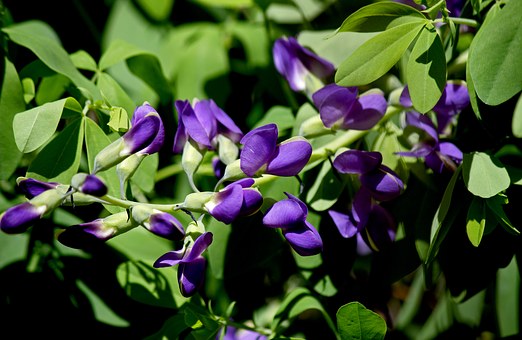
They prefer to grow unusual and sometimes rare and hard to find plants, they will not only make your container garden stick out but will add interest and provide a talking point when you have visitors coming around.
The major problem with unusual varieties are by nature that they are hard to find, as you have to go on a plant hunt to find them. People may become disillusioned about this but as they say, where there is a will, there is a way. I will not go into every place you can find each plant I recommend, as this will be very time consuming, but I will give general guidelines.
You can use the following websites to find where to buy these plants.
What follows are the plants which I consider unusual and rare, which most gardeners would agree upon. You are about to discover varieties that are not often seen, so grow something different.
ADONIS (Pheasant’s Eye)

This is not popular and you will need to hunt high and low for a supplier of the perennial species. It is worth looking for as it has bright yellow bowl-shaped yellow flowers that appear above feathery green leaves in February. They prefer to be grown in a container full of ericaceous compost in the shade.
The annual species is easy to grow but still difficult to find. The funny thing is that the annual prefers to be grown in a container full of multipurpose compost in full sun, the total opposite of the perennial.
The annual produces large, scarlet, dark centre flower in summer. Sow seeds of annual Adonis in March, where it can be planted out in late May, where it grows up to 30cm tall.
ALONSOA (Mask Flower)

A half-hardy, 60cm tall spreading, shrubby perennial that is often treated as a half-hardy annual. Often treated as a conservatory plant but it can grow outdoors. The plant produces serrated oval, green leaves, where orange blooms are produced on racemes, all summer long. Grow this plant in a well drain, gritty multipurpose compost in full sun. Plant seeds indoor in February and March in gentle heat and plant out in mid-May.
AMSONIA (Blue Star)

Another plant that is not offered in garden centres. This 90cm tall perennial has willow-like, green leaves, where in summer, small cluster of sky –blue to blue, star-shaped flower appear on upright stems. Grow this hardy perennial in a gritty moisture retentive compost in light shade.
ARISAEMA (Jack in the Pulpit)

An expensive, hard to find bulb that enjoy moist soil. Well worth buying if you want something that others do not have.
This 15cm tall bulb has broad shiny, green leaves that produce a large tube ‘flower’ with a pencil-like spadix. These flowers appear in May to June before the leaves appear. The flowers are followed by bright-coloured berries in August. Grow this plant in multipurpose compost in full sun.
BAPTISIA

Lupins are seen in gardens everywhere in summer yet its tall, attractive cousin from the USA is so rare. This 1.2m tall perennial has attractive green leaves that are divided into three leaflets. In summer, long-spikes of blue, pea-like flowers appear with long orange stamens. Alternatives such as B. Lutea has purple flecked white flowers, whilst that of B. tinctoria has yellow flowers.
Will require to be staked in windy sites. The flowers are followed by attractive black seed pods.
Grow this beauty in a well-drain multipurpose compost in full sun.
BRIMEURA (Spanish Hyacinth)

This is a hard bulb to find. It looks more like a bluebell than a hyacinth. This 20cm tall bulb has long and narrow green leaves from which spikes appear with delicate, blue, bell-shaped flowers appear in May to June.
You could get a dark blue variety and a white variety. Plant the bulb in early autumn in a well-drained, multipurpose compost in full sun or partial shade,
CARDIOCRINUM (Giant Himalayan Lily)

This is worth growing if you like something unusual. This bulb is a giant, growing up to 2.7m in height, where tall spikes of white, tubular flowers with reddish markings, appear in July and August that are highly fragrant. The spikes appear above shiny green leaves spiralling around the large stem.
You will need patience as it takes a couple of years before the stem of flowers are produced,
Plant the large bulb deep in a large container full of moisture-retentive multipurpose compost in light shade. After flowering, the main bulb dies and many offsets are produced. These offset can be planted once again but will take years to produce their flowers.
EDRAIANTHUS

This is an attractive alpine that is simple to grow but not easy to find. It grows up to 10cm in height, producing clumps of tufted green leaves and violet-blue, white or purple flower during June and July, which literally covers the whole planet. The flowers appear on short stems but the major drawback is that this perennial can be short-lived. Do not worry as it can be propagated via cuttings.
Plant this alpine in a gritty, multipurpose compost in full sun.
FRANKENIA (Sea Heath)

This can be found in some online stores, although it is not a real plant for ordinary gardeners, but rather a plant for collectors.
This is one plant that does well in seaside resorts, where it has a heather-like appearance of narrow, green leaves that curve inwards at the edge. This short perennial, only growing up to 7.5cm in height has pale pink flowers with yellow centres that appear in summer, above the leaves. Grow it in multipurpose compost in full sun.
GOMPHRENA (Globe Amaranth)

This half-hardy annual that is often used in bedding plant schemes is hard to find. It is worth growing from seed sown in February and planted out in late May. This annual is often grown for its dried flowers. This is because the flowers are cone-shaped and does not look like the common daily-like shape often found in flower arranging.
This plant grows up to 60cm in height where pink, red, or purple ball-like flower heads are borne on top of stiff stems in July to October. The green, oval leaves are not that interesting compared to the flowers themselves.
Grow this half-hardy annual in a well-drained, multipurpose compost in full sun.
HELIOPHILA

An uncommon bedding plant that grows up to 30cm in height. The best way to observe them is planted in groups in a large container full of well-drained, multipurpose compost in full sun. In July to September blue flowers with white or yellow centres appear on top on stems above cress-like leaves. This is followed by large green pods that are often used for flower arranging.
Sow seeds in April in a container that they are to grow in, or sow in March- April before planting out in Mid-May.
HOMERIA

These bulbs are such rarities and it is difficult to find a supplier, the leaves are long, green and narrow from which starry or cupped shaped yellow blooms are borne on top of wiry stems. This 30cm high plant prefers to be grown in a well-drained multipurpose compost in a sheltered, sunny location. You will need to plant the corms 7.5cm deep in January and lift again in October, where it should be stored in dry compost until replanting time is reached.
HOUSTONIA (Bluets)

This is an out of the ordinary perennial that forms clumps or matt of long, glossy, evergreen leaves. This 15cm tall perennial produces blue, yellow centre, star-shaped flowers that appear on slender stems. The flowers appear from late spring to early autumn. This unusual alpine likes the compost to be damp and so prefers to be grown in well-drained, enriched, multipurpose compost in partial shade,
HUTCHINSIA (Chamois Cress)

An alpine that is related to Arabis and Iberis but its blooms are much smaller. It is a short perennial that grows up to 7.5cm in height, where dark green, shiny divided leaves are produced, on top of the leaves. Short flower stalks appear en masse full of small, white flower from May to June. Grow this alpine in a well-drained, gritty, multipurpose compost in full sun or partial shade.
HYACINTHELLA

Another bulb that is hard to find. It grows up to 10cm in height where mid-blue flowers appear over strap-like green leaves in April to May. Depending on the variety bought you could get flowering spike full of bell-shaped flowers or spikes with hardly any blooms at all. Looks like a cross between a hyacinth and a grape hyacinth in shape.
Grow this bulb in a well-drained, multipurpose compost in full sun.
LINNAEA (Twin Flower)

A plant for the bog garden in container in the shade. This perennial produces a mat of tangled slim stems and rounded evergreen leaves. This short plant only grows up to 5cm in height but spreads very quickly. In May to July, pale pink flowers appear on top of stalks. An easy plant to look after if you grow it in a moisture-retentive, enriched, multipurpose compose in partial shade.
MORINA

An unusual member of the scabious family with unmistakable flowers. This 1.2m tall perennial has a base rosette of thistle-like green leaves, whilst the leaves on the flowering stem are much smaller. In mid-summer spike of white flowers appear when they first open. The waxy blooms mature to a pink colour and then finally turns a crimson red.
Grow this perennial in a well-drained, enriched multipurpose compost in a large container in full sun or partial shade.
OURISIA

A 20cm tall, evergreen perennial that like the growing site to be in the shade. This matt-forming alpine has oval-shaped green leaves where tubular lipped, whiter flowers appear in June and July. The flowers may be borne singly in small groups, or in large number in whorls on leafless stems.
Grow this perennial in a multipurpose compost in partial shade. You will need to protect this plant from slug and snail attacks as the plant can be decimated.
OZOTHAMNUS (Kerosene Bush)

This 90cm tall, evergreen perennial that is not often found in garden centres. The major problem with this plant is that it is often described as tender only suitable to be grown in mild areas. This is not true as two varieties exist that are hardy to the British climate. The common name comes about as the bush produces a gas that is flammable.
The perennial has long, oval, green leaves and on top of long spikes, white flowers appear. The blooms are ideal to cut and dry for flower arranging. Look out for O. rosmarinifoius that is more shrub-like, with leaves looking more like rosemary and the flowers are fragrant.
Grow it in a sandy, well-drained, multipurpose compost in full sun.
PELTIPHYLLUM (Umbrella Plant)

This unusual giant-leaved plant grows up to 1.5 m in height. The leaves can grow up to 60cm in width and during the growing season, the leaves change from a bronze, green colour to reds/browns in autumn. The white or pink flowers appear in clusters on top of leafless stalks.
The flowering stalks appear in April and May before the giant leaves show their beauty. The common name comes about the large, rounded leaves that are borne on tall stalks, giving the plant an umbrella-like structure.
Grow it in a moist, water-retentive, multipurpose compose in full sun or partial shade.
PODOPHYLLUM
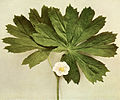
This is a rare plant to find and you will need to go on plant hunt. This 45cm tall perennial that has large palmate, brown- speckled, green leaves. From which large, white or pink, waxy flowers with yellow centres are produced in April to June on short stalks. This is followed by long, red, edible fruits.
Grow this plant in an enriched, multipurpose compost in partial shade or full sun.
ROSCOEA
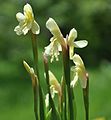
This attractive bulb is such a rarity, which is puzzling as it is quite easy to grow. In late spring this 45cm tall bulb produces oval-shaped, green leaves, which are followed by iris coloured, orchid-like flowers on short stalks in summer. It certainly looks like an exotic flower but it will quite happily survive over winter if its crown is mulched and it is planted in well-drained compost.
Grow this bulb in a well-drained, enriched multipurpose compost in full sun or partial shade.
SHORTIA

This 15cm tall perennial has oval-shaped, shiny, green leaves that are tinged brown or red, which turns dark red in winter. This evergreen plant produces white or pink trumpet-shaped blooms that appear in April and May on top of short, wiry stems.
Grow this perennial in a well-drained, ericaceous compost in partial shade.
STYLOPHORUM
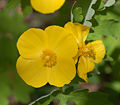
This is a member of the poppy family, which is not often grown. It can be recognised by its large, deeply lobed, green leaves on slim stalks. On top of these papery, yellow flowers appear, where it will grow up to 45cm in height. The flowers are either borne singly or in small clusters and are followed by attractive, silvery seed pods. It can be short-lived perennial. Grow it in a well-drained, enriched multipurpose compost.
You can sow seeds in spring in-situ in containers, where they are to grow and flower.
TECOPHILAEA (Chilean Blue Crocus)

There are a lot of bulbs that are rare and this is one of them. Chilean blue crocus grows up to 15cm high with its sword-like green leaves. The most eye-catching part of the bulb is the colourful, deep blue blooms that appear in March and April. It is not particularly difficult to grow but the cost and its preference for mild temperatures make it impossible to grow in most areas.
You will need to plant the bulb 5cm deep in September and October in well-drained, sandy, multipurpose compost in full sun.
THERMOPSIS (False Lupin)

Not a common plant at all where spikes of yellow, pea-like bloom are borne that give the plant an appearance of lupin. The main difference is that the plants are taller and have leaves that are divided into three leaflets instead of 5 found in lupins. Several species are available, all fully hardy and easy to grow.
Grow in a well-drained, multipurpose compost in full sun.
TRILLIUM (Wood Lily)
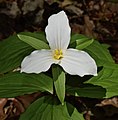
Yet another unknown bulb that grows up to 30cm in height, where it will flourish in the shade. The trillium is planted underground as a rhizome, where fleshy stem bears oval-shaped, light green leaves and flower parts, all come in groups of three. Three oval leaves, each with three white or red-petals in the flowers with three sepals around a yellow stamen.
Grow this beauty in a well-drained, enriched multipurpose compost in partial shade,
UVULARIA (Marybells)

Another plant that thrives in the shade and is not often seen in a garden. This is, in fact, a member of the lily family. The 45cm long stems have glossy green, long leaves, and in April and May long yellow, tubular flowers appear with narrow end twisted petals on top of branching stems. Grow it in a well-drained, moisture-retentive, multipurpose compost in partial shade.
VERONICASTRUM (Culver’s Root)

A tall, 1.2m high, stately perennial that has whorls of toothed, lance-shaped, green leaves and purple-blue flowers that appear in July and September. It is home in wet ground and so you will need to plant this perennial in an enriched, moisture-retentive, multipurpose compost in full sun or partial shade.
VITALIANA

An unusual alpine that most visitors to your garden will have not seen. This ground-hugging perennial has tiny leaves of green rosettes. The leaves often have a silver colour to the margins and in April and May, tubular, yellow flowers are borne above the rosette. Grow this perennial in a well-drained compost in full sun. You will need to protect the plant against rain in winter.
WAHLENBERGIA (New Zealand Bluebell)

Like Vitaliana this is an unusual alpine and is one for unusual plant collectors. This 7.5cm tall plant has lance-shaped leaves, where on top of tall spikes, upright bell-shaped flowers are produced in June and July. Unlike Vitaliana it tolerated more rain and less sunshine. Grow this perennial in a well-drained multipurpose compost in full sim or partial shade.
WATSONIA (Bugle Lily)

An uncommon plant that is closely related to the gladiolus but this bulb flower looks nothing like gladioli. The tallest Watsonia grows up to 1.5m in height where on tall stems star-shaped tubes are borne on either side of the stem. Flowers come in shades of orange or pink. None of these bulbs can withstand frost and so it is important to plant in April or May and then lift in autumn.
Grow this bulb in a well-drained, multipurpose compost in full sun.
ZAUSCHNERIA (Californian Fuchsia)

An uncommon perennial that provides a welcome feature to front of container displays. This 30cm tall perennial has grey-green leaves that are hairy. In August-October tubular, scarlet flowers are borne in clusters at the top of the stems. The flowers are either pink, orange or red.
Grow this perennial in a well-drained, gritty multipurpose compost in full sun.
CONCLUSIONS
In this article, growing unusual varieties of flowering plants in containers have been discussed. As you can see there are a vast array of plants that are rarely seen in British gardens. This does not mean that they cannot be grown but because of a lack of appeal or some other reasons, people do not grow them.
If you are looking for plants that your neighbours do not have or grow, then you cannot go wrong with this section.
If you have any questions or comments you like to make, please do so in the comment box below.
Happy Rare plant hunting.

I don’t have a yard, I’m on the block. I like to have flowers in the house. But I don’t want any flowers. I prefer the rare ones. I like it, among the flowers you wrote about Amsonia because of its flowers. Arisaema is again a special flower. I wanted more flowers in the apartment. I’m glad I found your article. Here is exactly the information I need.
Hi Irina
Thank you for those kind words. I have an extensive category on houseplants, which should cover all your need for indoor plants Colourful Indoor Container Leaf Plants (Grow More than Plain Green Leaves), 32 of the Best Flowering Houseplants (Plants that will Give Great Blooms Indoor) and Indoor Container Gardening (How to Get the Best from Your Indoor Plants). I have many more ideas for future articles for indoor plants and hope you come back for these.
Thanks
Antonio
Great post it’s very interesting to see what flowering plants are hard to find in container gardening, in your opinion. I have three 1 foot by 3 foot containers on my back porch. It’s just turning winter here so I don’t have anything in them right now but I really liked reading about the Chilean Blue Crocus and the New Zealand Bluebell. I think those mixed with a white or black container flower would really make my container gardens pop this Spring! Thanks for the great ideas.
Hi Julzdk
Thank you for your kind comments. Yes, we are approaching winter but my articles are here to inspire to plan ahead for the next growing season. By giving ideas I hope to get people’s creative juices flowing. I am glad to have helped.
Kind Regards
Antonio
yeah!thanks for this post I really love those flowers and thanks also for the recommendations the blue star flowers as always been my favourite but it’s very hard for me to get here but with those recommendations and links you provided am gonna get them soon thanks so much for the post
Hi rose
It is my pleasure to be of service to you and I hope you come back to see my future articles that I will be publishing.
Kind Regards
Antonio
Hi, Antonio.
Thanks for sharing your views on growing unusual verities of flowering plants in containers. You made rare plants hunting so easy by sharing online websites. The variety of flowers introduced is overwhelming but also offers a selection of our favorite varieties. Thanks for your extensive research and suggestions.
Warm Regards,
Gaurav Gaur
Hi Gaurav
I think it is important that and I want people see my passion for container gardening and I want to help as many people as possible to catch the gardening bug, It is my pleasure to be of service.
Thank you
Antonio
Very good article! Since a while ago I traveled to Scotland for work, and I met the “Baptisia” plant. And that’s why I came to your blog.
I loved his strong color and the height he was. And my question is if I can make this plant grow from seed, since I live far from where I met her and I think the only way would be to buy the seeds.
The other big question is that unlike Scotland I live in a fairly dry and sunny place. Can this be a problem? How should I prepare the area to “imitate” as closely as possible the conditions of Scotland. Well, particularly it was in Aberdeen;)
I have seen that you mention that it can be grown in a well drained space and in full sun. But what worries me is the dry climate in which I live.
What do you recommend for this particular point?
Thank you! And I hope to cultivate my Baptisia!
Regards
Paul
Hi Pablo
Thank you for visiting my website once again. Baptisia is such a great plant and you should not have any problem cultivating it in a dry and sunny place. WeAll well-drained means is that the plants do not like its roots to be waterlogged and full sun means that the plant gets more than 6 hours per day of sunlight. If you can match these conditions then the plant will grow well. I have a glossary on top of my page explaining all the terms I commonly use. Glossary of commonly used gardening terms.
Hope that answers your question
Kind Regards
Antonio
I am amazed by the varieties of rare flowering plants you shared here. Rare is gold.
A few months ago, my husband brought home an abandoned container plant. He is a “green” person plus he has a green thumb. Not knowing what to expect, the plant grew healthily with beautiful flowers. We have no idea what flower plant it is but definitely got my neighbours’ attention to the point of the flowers being plucked without our knowledge.
So, it is wonderful to grow unusual varieties but has to grow them in our guarded or gated compound.
Thanks for sharing these lovely flowers.
Hi Sharon
I am sorry about your flowers being plucked but gardening thefts are sadly on the increase. You may need to improve your security arrangements in the garden.
I am glad you enjoyed the article and got alot out of it.
Kind Regards
Antonio
This is a very unusual collection of plants that are hardly ever seen in suburban gardens,but are something that we can use to bring a fresh view to our gardens.
Edible plants grown in containers,make a very different idea, for those living in flats, or places where,it is not possible to grow your own vegetables,potatoes would be a great thing,to grow not only supplementing your usual diet,but giving a new dimension, to planting in pots.
My late father had a very interesting hobby,he grew a hydroponic garden, he took a metal tank about 2.5 m by 1.2 m by 300 mm deep, and grew beans and tomatoes on a bed of straw, on chicken wire mesh, just on the water, which was filled with a mixture of growth chemicals, which he researched on hydroponics articles,he actually did well, and produced some good vegetables.
Hi Robert
Thank you for sharing your grandfather’s interesting experience with hydroponics, It can really show what is possible and what is not possible in gardening. We all have different experiences, which you have highlighted in this comment.
Glad you enjoyed the article
Kind Regards
Antonio
Hi there. Looks really cool to grow these unusual varieties of flowering plants in containers. I think these unusual plants when grown will make the garden or wherever it is being used exceptionally beautiful and different from others. I have seen some of these plants before… They’re really beautiful. Thank you for sharing
Hi Techie
I am glad to have been of service. I am happy that you have come across some of these plants, as you must be the only one.
Kind Regards
Antonio